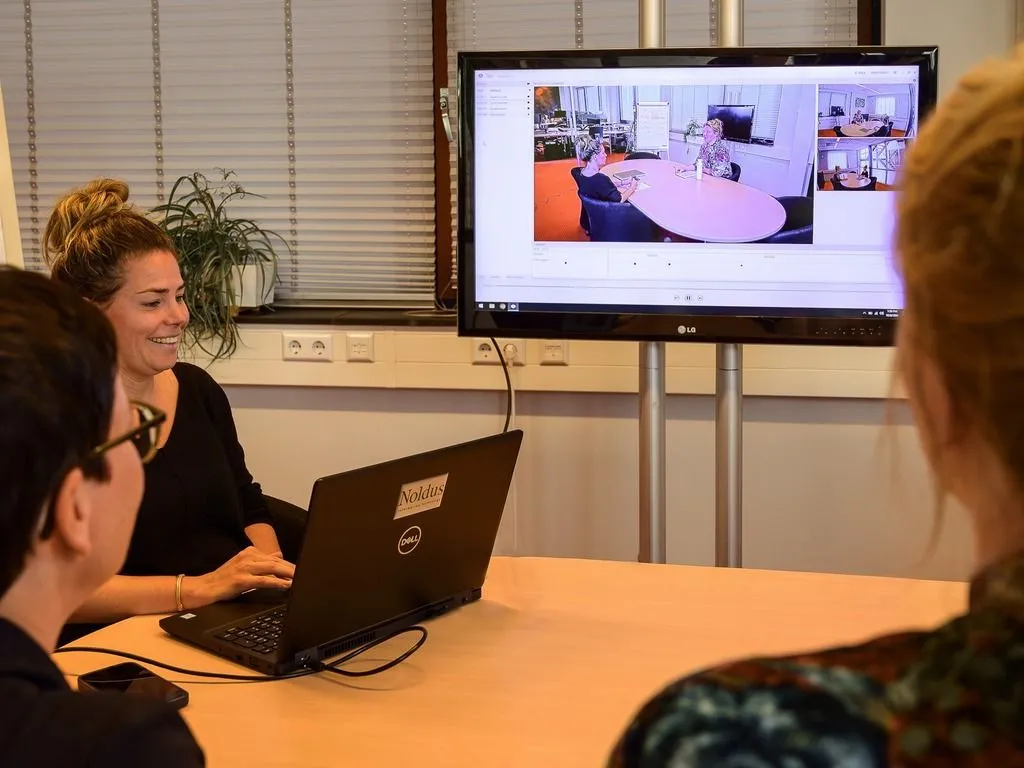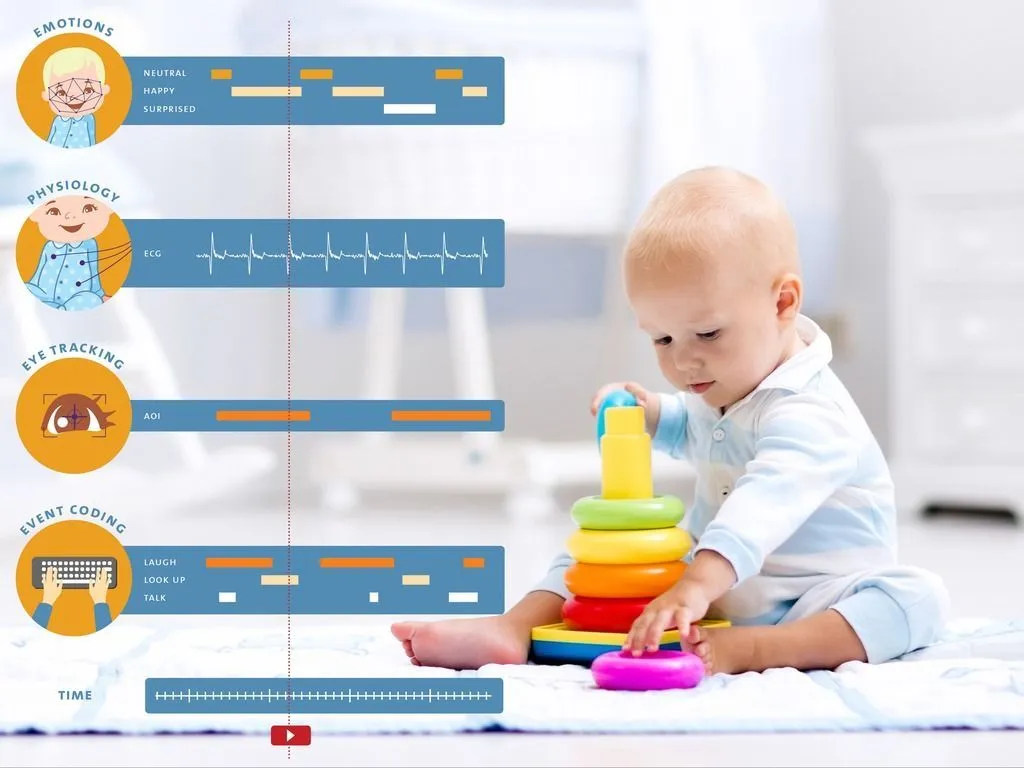Software and solutions for human behavior research
Work smarter, gain better insights from your behavioral analysis, and experience seamless data integration. Get to know the tools that will help you advance your research in application areas such as psychology, education & training, and user experience.
Schedule a call with an expertHow can we help advance your research today?

Overview of
software and hardware

Overview of
research applications

Overview of
research labs
Trusted by researchers around the world






Powerful software and hardware tools for human behavior research

NoldusHub | Synchronize multiple datastreams
Your data in a heartbeat: NoldusHub® software centralizes and synchronizes behavioral research data, uniquely supporting multi-station research from one central location. Its real-time integration, system heartbeat, and intuitive interface enhance your research efficiency and accuracy. Discover the future of data-driven insights.

Viso | Get instant video-based feedback
Effortlessly record video and audio to study behavior in real-time. Viso® enhances training, education, and research by offering instant feedback and secure data management. Its synchronized playback, video highlights, and marker setting features deliver precision and flexibility, making it ideal for use in training or research environments.

The Observer XT | Explore observational data in detail
Designed to improve research, The Observer® XT offers video analysis, real-time coding, and data integration. You can easily capture and analyze behavior across various data streams. It’s a powerful tool for real-time coding, syncing multiple inputs, and generating detailed statistics. It helps you uncover valuable insights for publication.

FaceReader | Analyze facial expressions automatically
Emotions instinctively influence our behaviors and decisions. FaceReader’s™ main output is a classification of your participant's facial expressions. It detects emotions like happiness, anger, and surprise, as well as custom expressions you define. By providing real-time insights it proves to be a valuable tool.

MediaRecorder | Record observations with ease
Want to capture multiple video and audio sources simultaneously? Just set up your cameras, and with a simple click, you're ready to record in full HD. You don’t have to worry about complicated setups. You can connect up to 8 cameras and microphones. Pre-recorded videos can be analyzed in The Observer XT, Viso, or FaceReader.

TrackLab | Examine spatial behaviors
Use TrackLab™ to measure a wide range of spatial behaviors, including movement, place-preference, and social interactions. Benefit from high accuracy tracking (UWB).
Eye tracking | Know what a participant is looking at
Add substantial power to your lab set-up by retrieving data on visual attention. Measure where someone is looking or how eyes move in relation to the head with eye tracking.

Data acquisition systems | Measure physiological signals
Retrieve data on cognitive processes and physical signals. Various sensors and devices can record processes like brain activity, heart rate, and skin conductance.
Trends & discoveries in human behavior research
Interactive infographic
Whether you're looking for inspiration or validation for your own research approach, this is a must-see!
This interactive infographic not only reveals key trends and the power of using multiple tools, it also let's you explore highlighted publications with a simple click.
Interactive infographic
Whether you're looking for inspiration or validation for your own research approach, this is a must-see!
Check out how leading researchers use Noldus tools like The Observer XT and FaceReader for deeper insights. This interactive infographic not only reveals key trends and the power of using multiple tools, it also let's you explore highlighted publications with a simple click.
Stay ahead in behavioral research!
Subscribe to Noldus Newsline
- Discover innovations – Be the first to know about new tools and software to advance your research and get insights that help you stay ahead.
- See real research in action – Get inspired by real-world studies from our community, discovering fresh approaches for your work.
- Access exclusive perks – Receive early updates on promotions, product releases, and events crafted for you.
Unlock insights in these application areas

Psychology research
As a psychologist, you are concerned with understanding the principles of behavior, including how individuals learn, make decisions, and respond to different stimuli. Given that human behavior is shaped by a complex web of factors, studying it requires an integrated approach.

Education & Training
How can you make sure students become the professionals they aspire to be? Let them practice their skills and benefit from video feedback. Feedback serves as a main source of learning, helping students evaluate their learning process and identify gaps.

Emotion analysis
Emotions are a fundamental part of being human, shaped by our brain and influenced by our interests and past experiences. Emotion data allows you to explore the complexities of human behavior with greater precision.

Behavioral economics
People make countless decisions every day, but the reasons behind certain behaviors are often unknown. Uncovering real motives involves observation and measuring emotions, gaze, and physiological reactions.

User experience
Is your product used as intended, or does it need adjustments? User experience research focuses on understanding user needs, behaviors, and preferences to inform design improvements and create enjoyable experiences.

Consumer behavior research
What drives individuals' choices? Track eye movements, facial expressions, and other behaviors to understand what truly influences buying patterns, preferences, and motivations.

Human factors
Ensure that designs meet users' needs. Understand how people interact with systems, products, and environments to improve usability, safety, and performance.

Neuroscience
Explore the brain mechanisms supporting cognitive and social behavior. Neuroscience aims to understand thoughts, emotions, and actions, helping reveal brain-behavior relationships.
What kind of lab do I need?

Multimodal research lab
A multimodal human behavior research lab integrates eye tracking, facial expression analysis, galvanic skin response, and electrocardiography. It captures comprehensive data on attention, emotion, and physiological responses to study complex human behaviors in varied contexts.

Multi-room lab
This lab features interconnected rooms equipped with technology to observe, record, and analyze human interactions in a controlled setting, providing valuable insights into behavior and understanding of thought processes in various scenarios.

Observation lab
An observation lab includes a one-way mirror, recording equipment, and a controlled environment. It allows researchers to observe and analyze participants' behaviors, interactions, and responses in a naturalistic yet controlled setting.

Consumer behavior lab
Conduct research in a consumer behavior lab to gain insights into decision-making. Uncover what drives consumer choices by analyzing shopping behaviors, advertising impact, and product testing.

Portable lab
A portable observation lab with mobile equipment allows studies in diverse real-world settings, capturing authentic behaviors and interactions for comprehensive analysis.

User experience lab
Noldus provides both UX testing tools and complete user experience labs, designed to help understand how products are used and how they can be improved based on real user feedback and insights.
Frequently asked questions
How to study human behavior?
Why do we act the way we do? How is our behavior influenced, or measured? And why is behavioral change so difficult? Read this blog post and find out more about several behavioral theories, as well as different ways to measure human behavior. Also explore the research fields in which human behavior analysis plays a central role.
What can I use Noldus' products for?
To measure human behavior, all kinds of research instruments are at your disposal. Studying human behavior involves various types of data, such as audio and video observations, physiological measurements, eye-tracking data, and facial expression analysis.
Why do I need an automated system?
An automated system ensures precise, unbiased data collection, minimizing human error and saving time. With automated tools, you can continuously monitor behavior, run complex protocols effortlessly, and gain deeper insights with higher accuracy, making your research more reliable and efficient.
Don't know where to start?
We're happy to help
Book a meeting for an online or onsite session.
Together, we can discuss you research requirements and come up with the best solution!